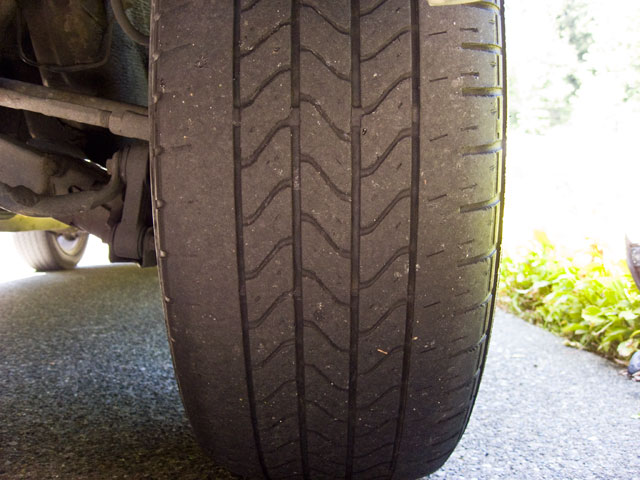Why Care?
Making that trip to get your vehicle serviced can feel like nothing except a huge hassle. But it seems that in this fast paced world, more and more people are neglecting their tires. In fact, an estimated 25 percent of all vehicles are running on under inflated tires according to the National Highway Traffic Safety Administration (NHTSA). It is also reported that these vehicles are three times more likely to be involved in tire related crash than those with properly inflated tires.
However, it is important to worry about your tires and in particular, the state of your tire treads. Tire treads are the grooves in the rubber of a tire designed for water to pass through and prevent hydroplaning. These should be closely monitored because they can greatly impact the safety of your vehicle. Worn treads makes cars more likely to react poorly in bad weather conditions like rain and snow.

Types of Tread Wear
There are a variety of tire wear signs that you can identify just by looking at the edges of your tires. Listed below are a few tire wear terms that every vehicle owner should be familiar with.
1. Toe Wear
- Toe wear occurs when the inner or outer edges of the tire experiences excessive wear.
2. Camber Wear
- If there is something wrong with the wheel alignment, you may see evidence of what is known as camber wear. Compared to toe wear, camber wear is more extreme and should be fixed immediately.
3. Center Wear
- When the outer edges of the tire wear out before the middle, it is called center wear. This indicates the tire is probably under inflated. In order to make necessary adjustments locate the appropriate tire pressure, which can be found listed on the side of the tire.
4. Cupping Wear
- This wear looks like diagonal grooves. It is a very serious problem because it means the vehicle’s suspension is worn down, bent or compromised.
5. Patchy Wear
- When a tire is out of balance, patchy wear may result. This is also known as feathering and can be identified when patches on the tire seem worn. To help avoid this, tires should be spun and rotated by a mechanic.
Prevention Methods
There are many quick and painless steps you can take to prevent tire wear and tear. But the secret to a healthy and long tire lifespan is proper maintenance.
The NHTSA recommends checking tire pressure regularly, at least once a month or every 5,000 miles, including the spare because tires may lose air over time. Vehicles that are front-wheel drive will have tires that wear more quickly too.
And if that doesn’t seem to do the trick, you can always try the tire tread penny test. Take a penny with Lincoln’s head facing you and upside down, and place it between the tire groves. If a portion of Lincoln’s head is covered, you have passed the test and don’t need new tires. But if you can still see the full head of Lincoln, it’s time to get them replaced because your tread depth is less than 2/32 inch.
Ensuring that your tires are properly inflated, you will not only improve your overall driving experience but also your gas mileage. According to Fuel Economy’s website, appropriately maintained tires can increase gas mileage by 3.3 percent. Also, there are fuel-efficient tires available that can improve fuel economy as well. These tires have low rolling resistance capabilities increasing traction efficiency.
Your tires are important, so take care of them! By having a basic understanding of tire treads and following the precautionary steps described above, you will extend the duration of your tire’s life and enhance the overall driving experience.
Written by the staff at KB Tire & Auto. KB Tire & Auto is the leading expert in auto repair Moberly MO has to offer.

